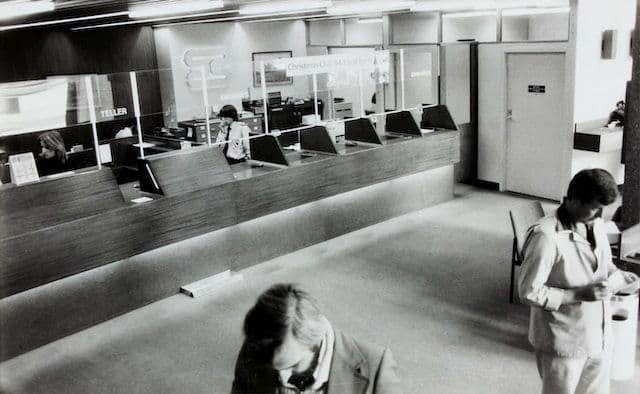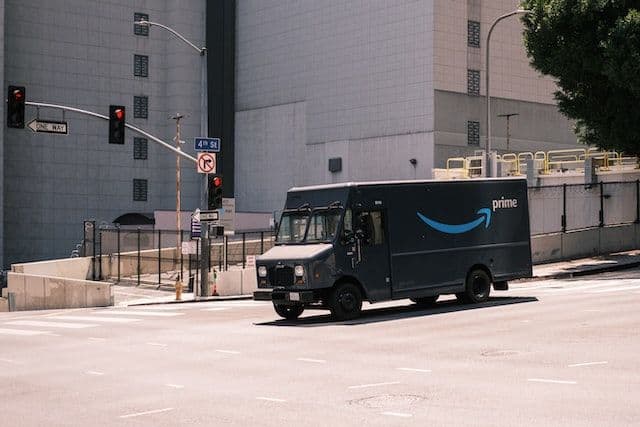- The Ultimate Guide for First-Time Founders
- 📌 Part 1: What Type of Business Can You Start With No Money?
- 🧠 Part 2: Validate Your Idea Without Spending a Dime!
- 🧰 Part 3: Build Your Business Infrastructure for Free
- 📢 Part 4: Market Without Money
- 🧾 Part 5: Legal, Taxes, and Banking: The Basics You Can't Skip
- 🧗 Part 6: Your First 90 Days – Milestones to Aim For
The Ultimate Guide for First-Time Founders
Over 60% of small business owners started their ventures with less than $10,000, and many with nothing.
That’s not a marketing slogan. It’s data straight from the U.S. Small Business Administration.
Yet, somehow, the myth persists: you need venture capital, angel investors, or a six-figure bank loan just to get an idea off the ground. That without funding, you're just another “wannabe entrepreneur” stuck reading business blogs and manifesting on LinkedIn.
Let me break it to you gently–but firmly: you don’t need money to start. You need leverage. And more importantly, you need to think like a founder before you ever touch a dollar.
I’m Hamid Nouasria, and I’ve helped tens of other people build businesses from less than nothing. I worked with founders who had no connections, no fancy business degree, and no seed capital. Just Wi-Fi, willpower, and a hell of a lot of resourcefulness.
Being part of tens of journeys helped me learn a thing or two. Now, I help future founders like yourself ditch excuses, sidestep startup clichés, and build something real.
In this ultimate guide, you’ll learn exactly how to start a business with $0–leveraging your skills, time, and free digital tools. Whether you're a student, a 9-to-5 escape artist, or just tired of watching other people live your dream, this blueprint will show you how to make money move without any money at all.
📌 Part 1: What Type of Business Can You Start With No Money?
Let’s cut to the chase: starting a business with no money or credit isn’t just possible. It’s how most successful founders begin. The secret? You start lean, focus on generating revenue early, and reinvest your first dollars into growth.

No fancy office. No investors. Just smart plays from home and digital leverage. Let’s explore some no-initial capital types of businesses.
1.1 Service-Based Businesses (High Skill, Low Capital)
If you’ve got a skill (writing, design, coding, consulting, tutoring, or admin work) you’ve already got your first income-generating business.
You don’t need inventory. You don’t need funding. You don’t even need a logo.
You just need a way to deliver value and a client willing to pay for it. Scaling up into a business? That would come later!
De facto, service-based businesses account for 79% of all startups that break even within the first year (according to Guidant Financial, 2024). That’s because services scale with effort, not overhead. No upfront investment, just your time and expertise.
And here’s the best part—you can launch from home with nothing more than a laptop and a Gmail account.
Start by offering services on platforms like Upwork, Contra, or even LinkedIn. Package your offer, build proof with testimonials, and validate demand before thinking about branding or scaling.
1.2 Digital Products (Create Once, Sell Forever)
Want to escape the time-for-money trap? Digital products are one of the easiest (I’m lying, it’s so hard) ways to generate revenue while you sleep.
We're talking about ebooks, online courses, Notion dashboards, audio files, Excel templates… products you create once, and generate income from forever.
Don’t overthink it. You don’t need a studio or a tech team. You just need a real problem you’ve solved, and the ability to package it into something useful.
You can host and sell through platforms like Gumroad, Payhip, or Shopify Digital Downloads.
1.3 Dropshipping & Print-on-Demand (No Inventory Required)
Not into services? Hate writing? Cool–sell products without ever touching inventory.
Dropshipping and print-on-demand are models that let you sell physical goods without stocking anything. You list a product, a customer buys it, and a third party fulfills the order.
You can start for free (or nearly free) using platforms like:
- Shopify (free trial, then monthly)
- Printful (for custom apparel and accessories)
- Spocket (dropshipping suppliers)
- Etsy (great for low-cost print-on-demand items)
🔥 TikTok is your trend radar. Creators are constantly showcasing viral products–monitor what’s working and spin it into your own brand.
Pro tip: Before you spend a dollar on ads, validate with organic marketing. Use Instagram Reels, TikTok, and Reddit to test interest. If you can't generate income without ads, you’re not ready to scale yet! Keep pushing and learning before you jump all in.
Also, if you want a little help, you can check our article on how selling on Amazon works.
1.4 Upcycled or Micro-Manufactured Goods
Prefer something more hands-on? Use what you already have.
Upcycled goods and handmade items like candles, thrifted clothing flips, or handmade jewelry can be started at zero cost with items around your home or thrift stores.
De facto, you can even go on Facebook marketplace and find people in your area offering stuff for free. Many got bicycles, pottery, artwork, and tools… which they don’t want but think someone could use. These are your GOLDMINE!
Pick these up, revamp and refurbish them, re-list them for a price, and bingo!
Don’t manufacture before you have buyers. Use preorders to fund production and test interest.
You can set up an online store on platforms like Instagram and Facebook in a few hours. Then, use generative AI models to help you create images to promote your products and get your first sale for a $0 investment.
You can also list your upcycled or micro-manufactured goods on platforms like Amazon, eBay, and Etsy.
💡Example: Keap Candles started by making natural candles in a small Brooklyn apartment. They launched a crowdfunding campaign with a simple landing page and idea. Now they’re a 7-figure DTC brand with a cult following.
🧠 Part 2: Validate Your Idea Without Spending a Dime!
A brilliant business idea is worthless if no one wants to pay for it.
Validation is your first investor, and it doesn’t cost a cent. Whether you’re testing your first full-time venture or one of many side hustles, the goal is the same: get real-world proof that people want what you’re offering.
Here's how to validate like a founder, not a hobbyist:
2.1 Research Market Demand
Before building anything, listen to the market.
You don’t need to hire consultants or spend weeks writing a business plan. The internet already holds the answers, and the best research tools are pretty free.
- Google Trends: This shows what people are actively searching for, and more importantly, when. You’ll quickly spot seasonal trends, rising niches, and demand curves.
- Reddit: The front page of the internet is where unfiltered problems live. Jump into relevant subreddits (like r/Entrepreneur, r/Frugal, or niche hobby subs) and look for patterns in complaints or requests.
- TikTok: Seriously. TikTok is where micro-trends explode. Search for your niche or browse relevant hashtags, and pay attention to what’s getting millions of views organically.
📌Bonus Hack: Head to Amazon. Read 3-star reviews on top-selling products in your niche. Why 3 stars? Because they’re honest! They usually highlight what was good, but more importantly, what was missing. That’s the market gap you want to fill.
This is how you make sure your business idea is grounded in real, current demand—not just something that sounds good in your Notes app.
2.2 Build a Minimum Viable Offer (MVO), Not a Full Product
Forget MVP for a second. What you need first is an MVO: a Minimum Viable Offer.
It’s the fastest way to test if people are willing to pay, without building anything fully. Your MVO is the simplest version of your offer that can still deliver value.
Let’s say your idea is a productivity course. Instead of filming 15 modules and writing a 60-page workbook, try this:
- Offer a 1-hour consultation teaching your method.
- Create a Notion template and include a quick Loom walkthrough.
- Share a mockup or Google Slides demo, and ask for beta testers.
💬 Ask yourself: Can I make my first $100 without a website? If the answer is yes, you’re on the right path. If not, your offer may be too bloated for your stage.
This mindset shift is what separates scrappy first-time founders from stuck perfectionists. Side hustles grow when you get real feedback fast, not when you stay in the lab tweaking fonts.
2.3 Use Preorders, Waitlists, or Crowdfunding
The best kind of validation? Money. And the best kind of money? Money before the product even exists.
Platforms like Kickstarter, Indiegogo, and Gumroad preorders allow you to launch ideas, collect early buyers, and test messaging, without producing a single item.
If you’ve built an audience (even a small one), offer early access, beta pricing, or limited preorders. Create a simple landing page, add a timer, and make it feel exclusive.
💡 Want proof this works? The video game "Cyberpunk 2077" secured over 8 million pre-orders, with these sales alone covering the nearly decade-long development costs within a single day.
🧰 Part 3: Build Your Business Infrastructure for Free
3.1 Tools That Cost $0 (Until You're Ready to Scale)

3.2 Build a Free Website or Landing Page
If you’re waiting until you can afford a web designer or agency to get started, you’re already losing. In 2025, building a clean, high-converting website is practically free. De facto, even back in 2021 when AI was not a big deal, I launched this website with the bare minimum. Later, when I got more income, readers, and revenue… it was time for a revamp!
Anyway, you want to start with a simple one-pager website for your offering.
Here’s the exact structure that works:
- What you do (your core offer in one sentence)
- Who it’s for (be specific—freelancers? moms? Shopify store owners?)
- How to buy or get started (CTA: book a call, pay now, join waitlist)
- Proof (testimonials, reviews, case studies—even if it’s just 2 beta users)
You can spin this up in 30 minutes using platforms like Carrd, Tally, or Notion Sites. Want to save time? Use AI tools like Claude, ChatGPT, or Jasper to generate copy for each section; just tweak the tone to match your brand voice.
This one-pager isn’t about branding; it’s about showing a paying customer that you’re open for business and ready to deliver.
3.3 Use Online Marketplaces to Jumpstart Sales
If you’re not starting in a marketplace, you’re missing a lot of potential.
Platforms like Fiverr, Upwork, Gumroad, Toptal, and Etsy are built-in ecosystems where people are already searching for your offer.
You don’t need a personal brand. You don’t need followers. You just need a profile, a good pitch, and the ability to deliver. These platforms bring the traffic, you get the transformation.
Yes, they take a cut. Yes, there’s competition. But what you get in return is cash flow, proof, and momentum.
You can reinvest that revenue into your own platform later, whether that’s launching a newsletter, a Shopify store, or hiring employees to help you scale.
Some of the most successful online entrepreneurs started on marketplaces, used them to stack testimonials and capital, and then built their own thing. Be strategic. Don’t romanticize “starting from zero” when you can start from where the buyers already are.
I do not consider myself a successful person yet, but Upwork helped me reach the place I am now.
📢 Part 4: Market Without Money
You don’t need a crazy marketing budget to get traction. What you need is consistency, clarity, and content that actually connects. Marketing without money is how you turn a product into momentum.
You are not trying to be flashy. You are trying to be useful, loud, and present where it matters.
4.1 Tap into Organic Social
Think you need a polished brand before you start posting? Wrong. You build the brand by showing up.
Here is your challenge. Post thirty TikToks in thirty days.
Pick one lane, talk about your journey, teach something useful, or share behind-the-scenes moments. You do not need to be a performer. You just need to be real. Needless to say, your content can still revolve around your product/service only, you don’t necessarily need to show your face.
The challenge here, however, is to retain users for longer without a face on their screens.
Anyway, take that content and spread it. Post short clips on Instagram Reels. Write a quick insight and share it on X. Turn your lessons into personal storytelling on LinkedIn. And YouTube Shorts are also a goldmine in 2025!
The more platforms you touch, the more people you reach. This is not about becoming an influencer. It is about building trust at scale.
The secret is showing up daily. Create fast. Post fast. Improve as you go.
Forget perfection. Consistency is the only algorithm that matters. Because ten quality posts will earn you more than one perfect post ever could.
You are not trying to please the algorithm. You are talking to real people. You only need a small group to trust you, believe in your offer, and become your first paying customers.
4.2 Master the Art of Word-of-Mouth
Word-of-mouth is still the most powerful form of marketing. Especially when you are just starting out.
Start with your network. Reach out to friends who trust you. Drop into Slack communities and add value. Join conversations on Reddit and look for people who need what you are building.
You are not begging for attention. You are solving problems.
People respond to that.
Then make it easy for people to talk about you. Add a referral system. Give your earliest users something they can share. Offer a reward that feels generous but sustainable.
That could be a bonus product, a free month of service, or early access to a premium tier.
If you can turn ten happy users into ten more, you are building momentum that no paid ad can compete with.
4.3 SEO on a Shoestring
SEO does not require an agency or a big content budget (at least, not at your stage!). It just requires curiosity and consistency.
Use free tools like Ahrefs, Semrush, or SpyFu to find what your audience is searching for. These platforms offer free tiers that give you just enough data to start. (You can invest in such tools later.)
Next, write two blog posts per week. Focus on one question per article. Teach something clearly. Provide real answers. Be specific. Make the content skimmable and useful.
To make this faster, train an AI tool like ChatGPT or Claude on your tone and topic. Let it assist you, not replace you.
Over time, your blog becomes an engine. People find you, read your content, and follow your links. Each blog becomes a silent salesperson. You are creating digital leverage that compounds.
Most people underestimate SEO because it is slow. But founders who play the long game build websites that convert strangers into customers on autopilot.
🧾 Part 5: Legal, Taxes, and Banking: The Basics You Can't Skip
This is the part most first-time founders either avoid or overcomplicate.
The truth is, you do not need to become a lawyer or a CPA to run your business properly. But you do need to get the basics right. A messy foundation will slow you down later.
Let’s make it simple.
5.1 Should You Register Right Away?
Not always. If you are testing a small offer or running a lightweight service, you can usually start as a sole proprietor. It keeps things simple while you are validating. But the moment money starts coming in consistently or you are working with clients and contracts, you will want a legal structure.
Here are your main options:
- Sole Proprietor: Fastest to start. No formal registration required in many countries. But you and your business are legally the same. That means no liability protection.
- LLC, also known as Limited Liability Company: Offers legal protection and makes it easier to open business accounts and apply for tools. Common for US-based founders.
- Limited Company: The UK version. Similar to an LLC. Slightly more admin but good protection and credibility.
Here are a few tools to help you register:
- Stripe Atlas is great for international founders who want a US-based company.
- Companies House is the go-to for UK registrations.
- Tailor Brands offers quick setups for US-based LLCs and can help you get your tax ID.
If you are outside the US or UK, research your country’s local business registration options. The legal structure is not just for protection. It makes it easier to open accounts, invoice clients, and stay tax-compliant.
5.2 Understanding Taxes Without an Accountant
If taxes confuse you, you are not alone. The good news is that for most beginner businesses, you can manage things solo with a bit of structure.
Know your self-employment thresholds.
In the UK, you only owe self-employment taxes if you earn over twelve thousand pounds in a tax year.
In the US, the threshold is four hundred dollars in net earnings. Once you cross that, the IRS expects you to report it and pay a tax on it.
To stay on top of things, use free or low-cost tools to track income and expenses as you go. Waiting until tax season is how things get messy.
Here are some tools to make life easier:
- QuickBooks Self-Employed offers solid tracking and connects to your bank.
- Wave Accounting is completely free and very capable for solo founders.
- HMRC Self Assessment is useful if you are UK-based and filing your taxes yourself.
You do not need to be a tax expert. You just need a clean system that helps you log income, save receipts, and prep for filing when the time comes.
5.3 Free and Smart Banking Tools
Step one is separating your business finances from your personal money. Even if you are still early, this makes everything easier. Taxes, bookkeeping, and trust with clients all improve instantly.
You want a bank account that offers three things:
- No monthly fees
- Easy invoicing
- Integrations with other tools you use.
Here are a few founder-friendly options:
- Wise Business is excellent if you are sending or receiving international payments.
- Revolut Business works well in the UK and European Union.
- Mercury is perfect if you are running a US LLC and registered with Stripe Atlas.
These tools also offer expense tracking, virtual cards, and integrations with bookkeeping software. If you plan on working with contractors or hiring employees later, it is smart to start with systems that scale.
🧗 Part 6: Your First 90 Days – Milestones to Aim For
When you're figuring out how to start a business without money, the first 90 days are decisive. Not because you’ll scale fast or go viral. But because this is where you prove you can take action, stay consistent, and generate momentum with limited resources.
The biggest mistake first-time founders make is chasing generic milestones. They see someone post their “first 10k month” and try to copy tactics without context. But your milestones are not one-size-fits-all. They depend on where you’re starting, what you’re building, and who you’re building it for.
Start by assessing your stage. Are you still validating your idea or already selling to real people? Do you have free time and skills you can trade, or are you juggling a day job? Be brutally honest.
Next, factor in your business model. A freelance writing service, a digital product, and a TikTok-driven dropshipping store are three completely different beasts. What counts as progress in one may be irrelevant in another.
Your goals should fit your context. If you're offering a service, your first milestone might be sending five cold emails. If you're building an audience, it might be posting every day for a month. If you’re selling a product, your goal might be a single preorder.
The beauty of starting a business without money is that it forces you to focus on actions that create proof, not fluff. You're not building for vanity metrics. You're building for validation, income, and sustainability.
Use your first 90 days to define your version of progress accordingly. Keep it real. Keep it lean. Keep it moving.
Written by

I am the CEO and founder of Overmentality. I am a professional business and technical blogs writer and on-page SEO specialist. I hold a degree in Culture Studies and Media Literacy from the English Humanities and Art Department. And I am interested in Digital Marketing, Business, Entrepreneurship, Leadership, and pets of course!
You can reach me via email here: hamiidnouasria@gmail.com
Or find me on my LinkedIn Profile.









